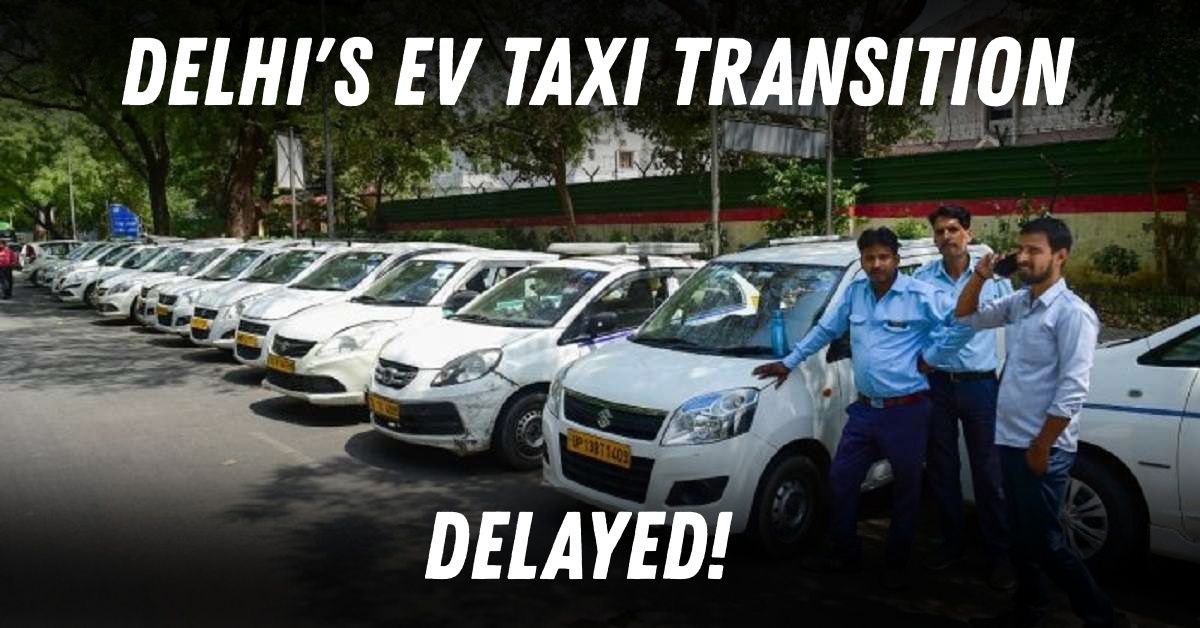Delhi Government to Revise EV Transition Policy for Ola, Uber And Other Cab Services


The streets of Delhi are about to witness a significant shift in policy direction as the city government prepares to revise its ambitious electric vehicle transition plan for cab services. What began as a bold environmental initiative under the previous administration is now facing a reality check, with officials acknowledging that the original timeline may have been too aggressive for the ground realities of the capital's transport ecosystem.
Transport Minister Pankaj Singh recently confirmed that the Delhi Motor Vehicle Aggregator and Delivery Service Provider Scheme, first notified in November 2023, is under active review. The original policy had set a firm 2030 deadline for all service providers to switch to electric fleets, but the new BJP government is considering more flexible timelines and addressing concerns about surge pricing controls.
The most contentious aspect of the original policy was its immediate mandate for electric-only bike taxis. Unlike other vehicle categories that were given four to five years for transition, bike taxi operators were expected to go electric from day one, with no grace period. This harsh requirement drew sharp criticism from aggregators who argued it made operations commercially unviable.
The numbers tell a sobering story about the gap between policy aspirations and market readiness. Currently, only about 2 percent of commercial vehicles operate under aggregator platforms, yet the policy specifically targets these organised players while leaving independent operators untouched. This creates an uneven playing field where traditional fuel-powered vehicles continue to operate freely whilst aggregators face stringent electrification mandates.
The charging infrastructure challenge remains particularly acute. Despite ambitious plans to establish 13,200 new EV charging stations across the city, Delhi has achieved only about 10 percent of its existing target of 48,000 charging points by 2026. With just 127 operational charging stations currently available through major networks, the infrastructure simply cannot support a rapid transition to electric cabs.
The financial barriers facing drivers remain significant. Electric vehicles carry notably higher upfront costs compared to conventional alternatives, with battery technology still accounting for a substantial portion of the total expense. For gig workers who often purchase vehicles through loans, this represents a formidable entry barrier.
The situation becomes more complex when considering the daily operational requirements of commercial vehicles. Whilst private cars typically cover 30 to 40 kilometres daily, commercial vehicles routinely travel 150 to 200 kilometres. This intensive usage pattern demands robust charging infrastructure and reliable vehicle performance that the current EV ecosystem struggles to provide consistently.
The policy revision comes after real-world feedback from various stakeholders. Officials have registered 64 entities on the government's aggregator portal, including 17 ride-hailing platforms, 42 delivery service providers, and five e-commerce companies. These firms collectively operate over 550,000 vehicles, comprising 325,762 two-wheelers, 121,339 three-wheelers, and 111,234 four-wheelers.
Concerns about the pace of transition were raised well before the recent review. One major aggregator had warned that Delhi's aggressive EV mandates risked dismantling the sector and impacting the livelihoods of over 100,000 drivers. Industry associations also flagged the issue, pointing out that many gig workers who had taken loans for petrol or diesel vehicles could face financial ruin under the existing policy.
The revised approach appears more pragmatic, focusing on gradual transition rather than abrupt change. Transport Minister Singh stressed that the aim is to create a comprehensive policy for all sections of people affected by it, especially the commuters and customers who use these services and those employed in the sector.
The government is also considering fare regulation guidelines, particularly around surge pricing, which has been a persistent complaint from users. The current policy lacks specific limits on fare fluctuations, leading to unpredictable costs during peak hours.
For everyday users of cab services, the policy revision could bring more stability and choice. Rather than facing potential service disruptions due to rapid fleet changes, commuters may see a more measured transition that maintains service availability whilst gradually introducing cleaner vehicles.
The focus on surge pricing regulation could also provide relief from the wild fare fluctuations that currently characterise peak-hour travel. However, this needs careful balance to maintain driver incentives whilst protecting consumer interests.
The Delhi government's decision to revisit its EV transition policy reflects a maturing understanding of the complexities involved in transforming urban mobility. Whilst the environmental goals remain valid and necessary, the path to achieving them requires more nuanced approaches that account for economic realities, infrastructure constraints, and the livelihoods of thousands of drivers who keep the city moving.
This policy revision represents not a retreat from environmental commitments, but rather a recalibration towards more achievable and sustainable transformation. The real test will be whether the new approach can maintain momentum towards cleaner transport whilst addressing the practical concerns that made the original timeline untenable.